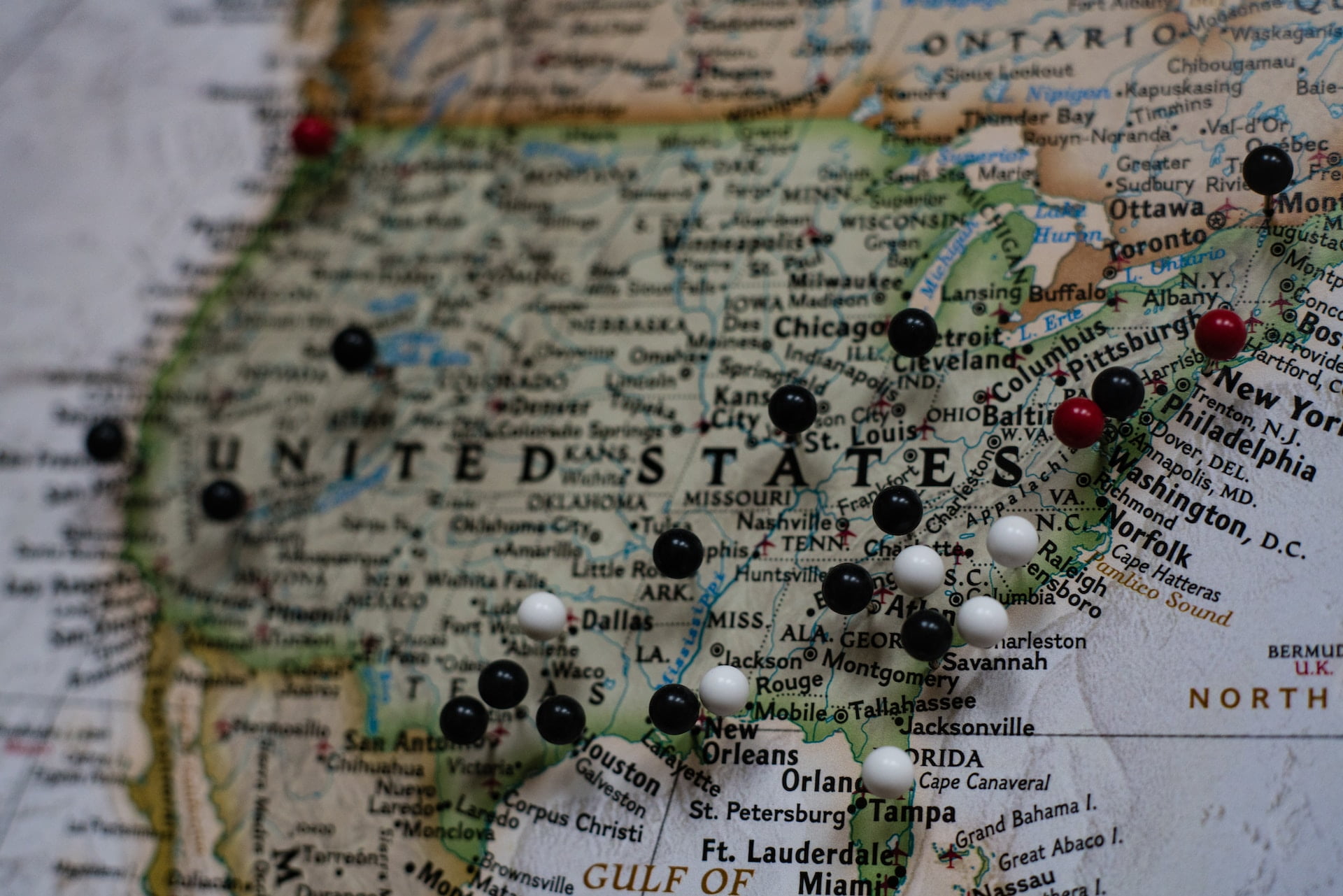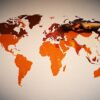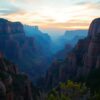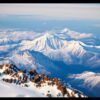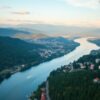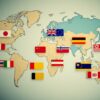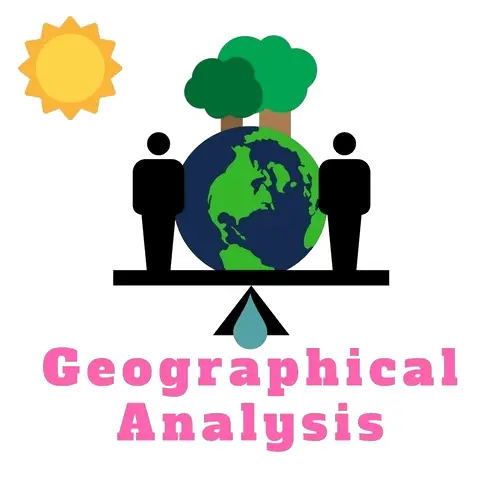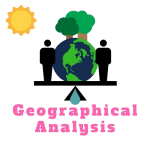The United States is a vast and diverse country, that stretches from the Atlantic Ocean to the Pacific Ocean. It has a wide range of geographical features, including mountains, plains, deserts, and coastal areas. This article explores the physical, political, cultural, and economic geography of the United States, providing an overview of its landforms, climate, states, cities, ethnic diversity, industries, and more.
1. Physical Geography of the United States
Physical geography refers to the study of Earth’s physical features and processes. In the case of the United States, it encompasses a diverse range of landscapes and natural features. Here are some key aspects of the physical geography of the United States:
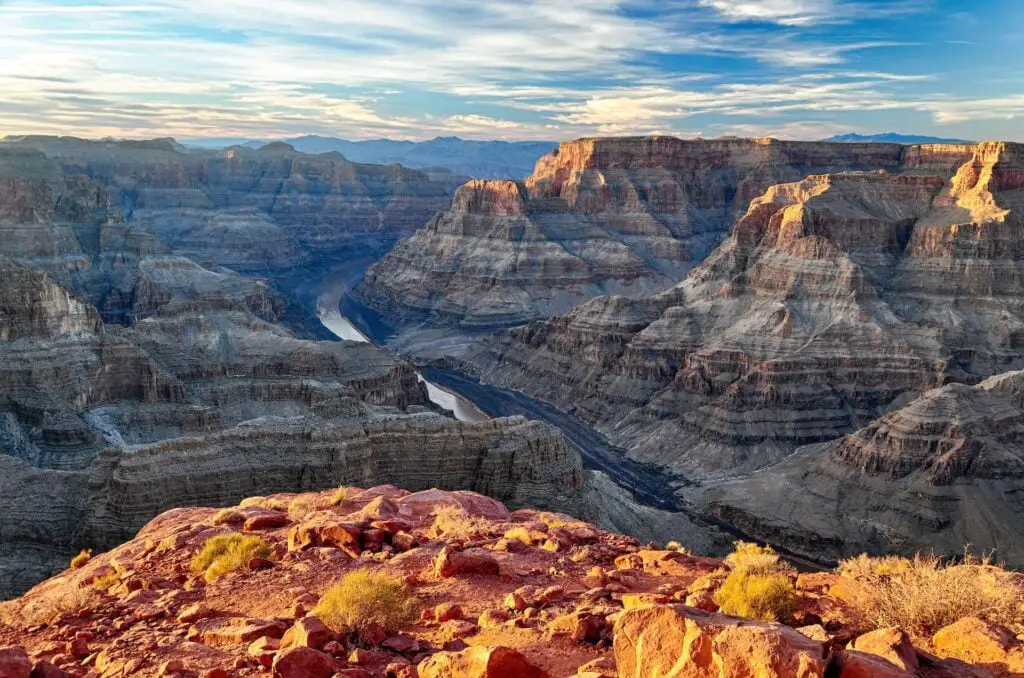
1.1 Landforms
The United States has many different varieties of landforms. From the towering Rocky Mountains in the west to the vast Great Plains in the center, and from the Appalachian Mountains in the east to the rugged coastal areas along the Pacific and Atlantic coasts, the country has many beautiful landscapes. The Grand Canyon, Yellowstone National Park, and the Everglades are just a few examples of the natural wonders found in the United States.
1.2 Climate
Because the United States is so big, it has many different types of climate patterns. The country has everything from arctic conditions in Alaska to tropical climates in Hawaii and Florida. In between, there are regions with humid subtropical, Mediterranean, desert, and continental climates. The weather patterns are influenced by factors such as latitude, elevation, proximity to oceans, and air masses.
1.3 Natural Resources
The United States has a strong economy because it has a lot of natural resources. It has a lot of coal, oil, and natural gas reserves, which have helped a lot to power the country’s industries and transportation. The country is also well-known for its copper, gold, iron ore, and uranium resources. Also, farming is done all over the country because the soil is good for farming.
1.4 Mountains
The United States is home to several major mountain ranges, including the Rocky Mountains, the Appalachian Mountains, the Sierra Nevada, and the Cascade Range. These mountain systems influence climate patterns, drainage systems, and the distribution of plant and animal life.

1.5 Plains
The U.S. has vast plains, such as the Great Plains in the central part of the country. These flat or gently rolling areas are characterized by grasslands and agricultural activities.
1.6 Rivers
The United States is crisscrossed by numerous major rivers, including the Mississippi, Missouri, Colorado, Columbia, and Ohio rivers. These waterways play a crucial role in transportation, agriculture, and the formation of fertile river valleys.
1.7 Deserts
The U.S. has several prominent desert regions, including the Mojave Desert, the Sonoran Desert, and parts of the Great Basin. These arid landscapes are characterized by low precipitation and unique plant and animal adaptations.
1.8 Coastlines
The United States has extensive coastlines along the Atlantic Ocean, Pacific Ocean, Gulf of Mexico, and the Great Lakes. These diverse coastal areas feature beaches, cliffs, estuaries, and barrier islands.
1.9 National Parks
The United States is known for its remarkable national parks, which showcase the country’s natural beauty. Examples include Yellowstone National Park, Yosemite National Park, the Grand Canyon, and the Everglades.
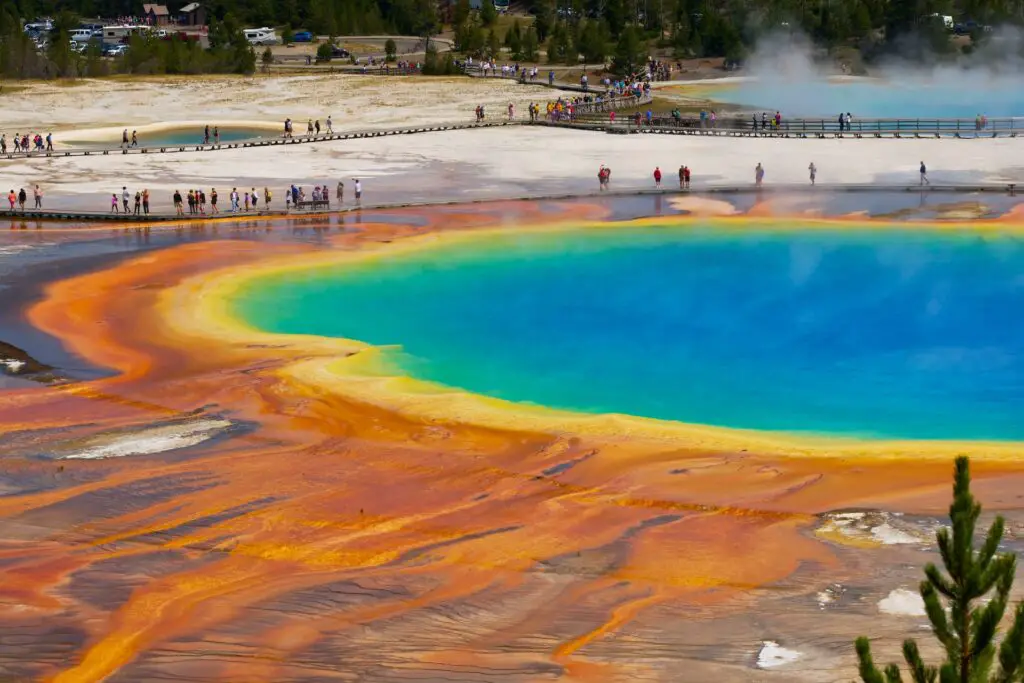
These are just a few examples of the physical geography of the United States. The country’s geography plays a significant role in its ecosystems, climate patterns, natural resources, and human activities.
2. Political Geography of the United States
2.1 States and Territories
The United States is made up of 50 states and several territories. Each state has its own government, with varying degrees of freedom. The states are further divided into counties, which handle local government. The territories, such as Puerto Rico and Guam, have limited self-governance and are under the sovereignty of the federal government.
2.2 Major Cities
The United States is home to numerous vibrant cities that are hubs for business, culture, and new ideas. New York City, Los Angeles, Chicago, Houston, and Philadelphia are among the biggest and most influential cities in the country. People from all walks of life come to these cities, adding to the country’s cultural diversity.
3. Cultural Geography of the United States
3.1 Ethnic Diversity
People from many different ethnic groups live together in the United States, making it a melting pot of cultures. The history of immigration has changed the country’s culture, making it a diverse place to live. The roots of most Americans can be found in places like Europe, Asia, Africa, and Latin America. This diversity is celebrated through various cultural festivals, traditions, and cuisines found across the nation.
3.2 Language
People of many different faiths live in the United States, which is known for its religious diversity. Most Americans say they are Christians, so Christianity is the most common religion. But other religions like Judaism, Islam, Hinduism, Buddhism, and Sikhism are also present in large numbers. Some of the most common languages are Spanish, Chinese, Tagalog, Vietnamese, and French. This shows how different communities speak different languages.
3.4 Religion
The United States is known for its religious pluralism, with people practicing various faiths. Christianity is the dominant religion, with a majority of Americans identifying as Christians. However, there is also a significant presence of other religions such as Judaism, Islam, Hinduism, Buddhism, and Sikhism. Additionally, a growing number of individuals identify as non-religious or agnostic, highlighting the country’s religious diversity.
4. Economic Geography of the United States
4.1 Industries
The economy of the United States is very strong and diverse. It is a world leader in fields like technology, finance, manufacturing, entertainment, healthcare, and more. Silicon Valley in California is known as the center of technological innovation, while Wall Street in New York City is a major financial center. The automotive industry in Detroit, aerospace in Seattle, and entertainment in Los Angeles are other notable sectors contributing to the country’s economic strength.
4.2 Agriculture
Agriculture is crucial in the United States, providing food and raw materials. It is one of the biggest producers of corn, wheat, soybeans, and cotton. It also has a big beef, poultry, and dairy industry. Different parts of the country are known for different types of agriculture. For example, the Midwest is often called the “Corn Belt,” and California is the biggest producer of fruits and vegetables.
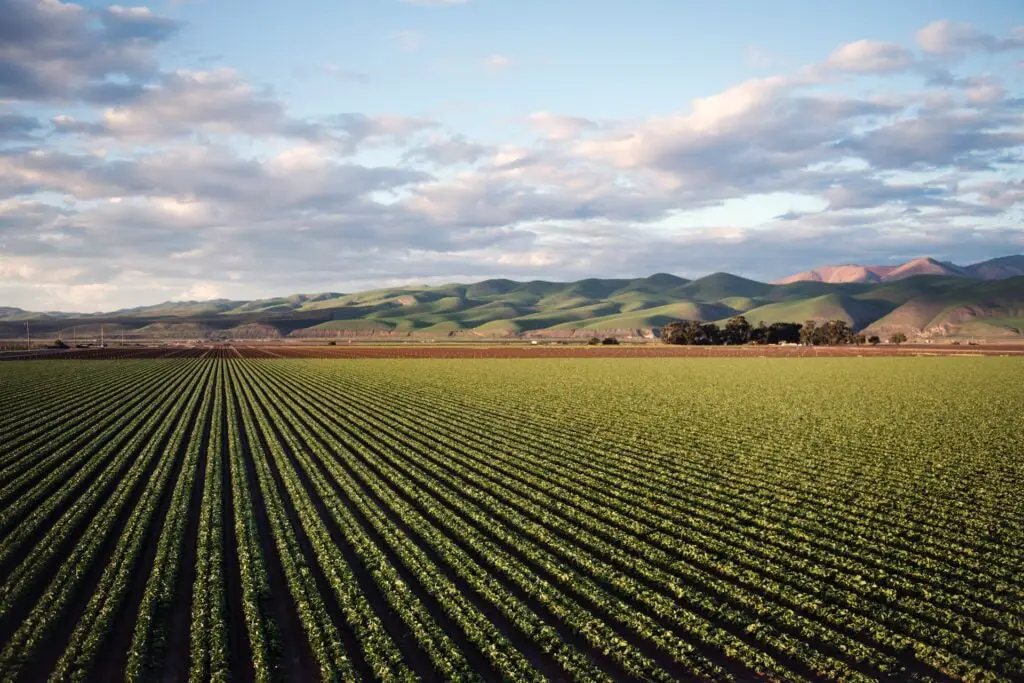
4.3 Trade and Transportation
The United States has a well-developed infrastructure that supports trade and transportation. Its large network of roads, trains, and airports makes it easy for goods and people to move around the country. The Port of Los Angeles, the Port of Long Beach, and the Port of New York and New Jersey are all important trade hubs. The country does business all over the world, and both importing and exporting help its economy grow.
5. Conclusion
The geography of the United States is made up of many different types of land, such as majestic mountains, wide plains, and coasts. There are 50 states and other territories in the country, and each has its own government. The United States embraces its many different ethnic groups, languages, and religions, which makes for a rich mix of traditions and beliefs. The country’s economy does well because of its industries, agriculture, and strong trade networks. The United States has a great mix of geography, culture, and economy, which makes it a truly unique and dynamic nation.
6. FAQs
What is the size of the United States?
The United States covers an expansive area of approximately 9.8 million square kilometers, making it the fourth largest country in the world.
How many states are there in the United States?
There are 50 states in the United States, each with its distinct characteristics and governance.
What is the official language of the United States?
The United States does not have an official language at the federal level. However, English is the most widely spoken language and serves as the de facto language for government, business, and daily life.
What are the major natural resources in the United States?
The United States is blessed with abundant natural resources. Some of the major resources include coal, oil, natural gas, copper, gold, iron ore, uranium, timber, and fertile agricultural land.
What is the largest city in the United States?
New York City is the largest city in the United States, renowned for its iconic skyline, diverse population, and global influence.
What are some famous landmarks in the United States?
The United States is home to numerous iconic landmarks. Some of the most famous include the Statue of Liberty, the Grand Canyon, the Golden Gate Bridge, Mount Rushmore, and the White House.
What are the major national parks in the United States?
The United States is renowned for its national parks, which showcase the country’s natural beauty. Some of the major national parks include Yellowstone National Park, Yosemite National Park, Grand Canyon National Park, Zion National Park, and Great Smoky Mountains National Park.

